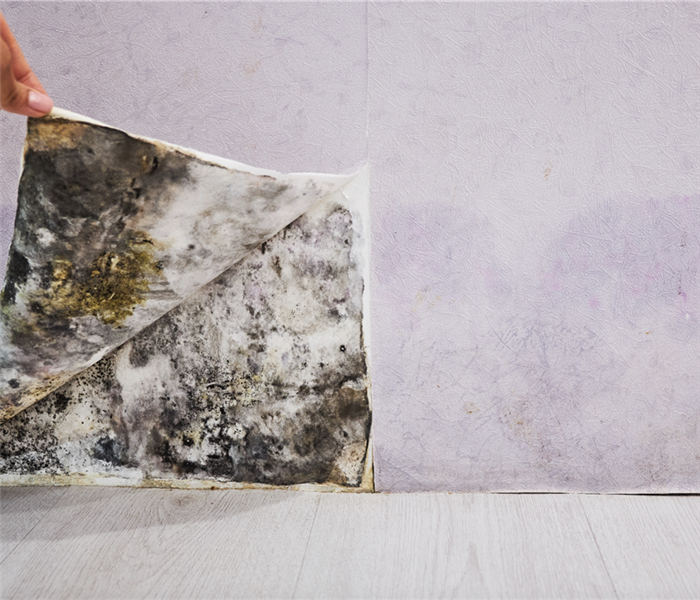The Mold Remediation Process: A Step-by-Step Guide
5/14/2023 (Permalink)
 Each step is crucial to ensuring that the mold is completely removed and the area is safe for occupation.
Each step is crucial to ensuring that the mold is completely removed and the area is safe for occupation.
Mold remediation is the process of removing and cleaning up mold from an indoor environment. Mold can grow in many different areas of a building, and can be difficult to remove without professional help. The mold remediation process involves several steps to ensure that the mold is completely removed and the area is safe for occupation.
Step 1: Inspection and Assessment
The first step in the mold remediation process is inspection and assessment. A professional mold remediation specialist, like SERVPRO of Temple & Belton, will inspect the affected area to determine the extent of the mold growth and the cause of the moisture that allowed it to grow. They may use specialized equipment, such as moisture meters or infrared cameras, to identify the source of the moisture and locate any hidden mold growth.
Step 2: Containment
Once the extent of the mold growth has been identified, the next step is to contain the affected area. This is done to prevent the spread of mold spores to other areas of the building. The specialist will use barriers, such as plastic sheeting, to isolate the affected area and prevent mold spores from escaping.
Step 3: Removal of Mold-Contaminated Materials
The next step in the mold remediation process is to remove any mold-contaminated materials, such as drywall or carpeting. These materials cannot be cleaned and must be removed and disposed of properly. The specialist will use protective equipment, such as gloves and masks, to safely remove and dispose of the contaminated materials.
Step 4: Cleaning and Disinfection
Once the contaminated materials have been removed, the specialist will clean and disinfect the affected area. This involves using specialized equipment, such as HEPA vacuums and air scrubbers, to remove any remaining mold spores from the air. The area will then be cleaned and disinfected with antimicrobial agents to kill any remaining mold spores.
Step 5: Drying and Restoration
The final step in the mold remediation process is drying and restoration. The specialist will use specialized equipment, such as dehumidifiers and air movers, to dry out the affected area and prevent any remaining moisture from allowing the mold to return. Once the area is completely dry, any necessary repairs or restoration work can be completed to restore the area to its pre-mold condition.
Mold Remediation: A Comprehensive Process
In conclusion, mold remediation is a comprehensive process that involves several steps to ensure that the mold is completely removed and the area is safe for occupation. The process begins with inspection and assessment, followed by containment, removal of contaminated materials, cleaning and disinfection, and finally, drying and restoration. Each step is crucial to ensuring that the mold is completely removed and the area is safe for occupation. By understanding the mold remediation process, homeowners can take steps to prevent mold growth and address any mold problems in their homes.



 24/7 Emergency Service
24/7 Emergency Service